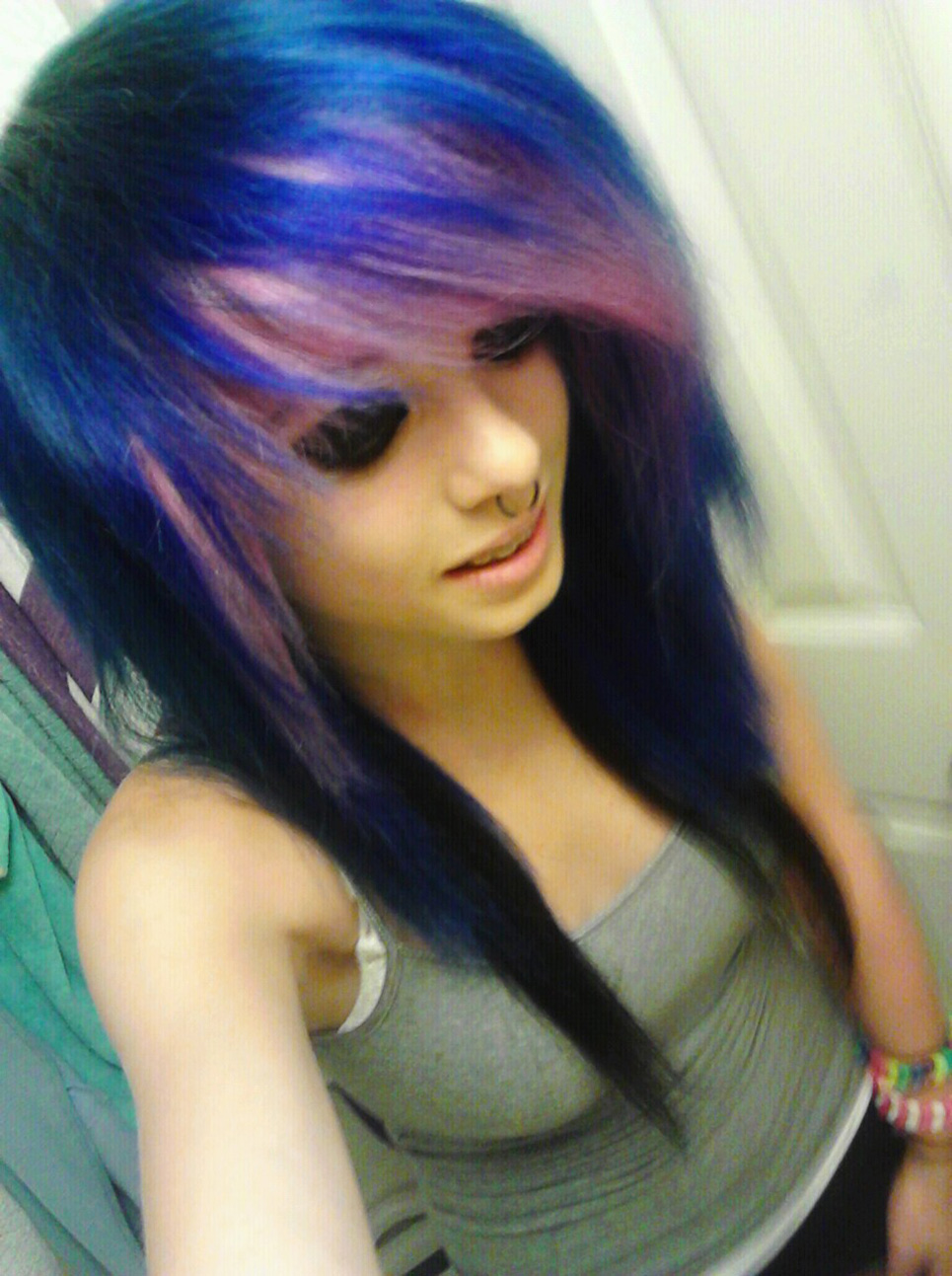The scene haircut has become a symbol of self-expression, individuality, and creativity in the realm of personal style. It reflects a vibrant subculture that emerged in the early 2000s, often associated with music genres like emo, punk, and alternative rock. Characterized by bold colors, dramatic layers, and striking contrasts, this haircut allows individuals to showcase their personality and embrace their uniqueness. As trends evolve, the scene haircut has remained a prominent choice for those wanting to make a statement.
While the scene haircut encompasses a wide variety of styles, it often features long, choppy layers, side-swept bangs, and vivid hair colors ranging from electric blue to neon pink. This adventurous approach to hairstyling not only captures attention but also reflects the wearer's artistic sensibilities. In a world where conformity often reigns, the scene haircut stands as a beacon of rebellion and creativity.
In this article, we will delve into the origins, styles, and cultural significance of the scene haircut. We'll explore how to achieve the perfect look, who has rocked this hairstyle, and why it continues to resonate with new generations. Whether you're considering a scene haircut for yourself or simply curious about this iconic style, read on to discover everything you need to know.
What is the Scene Haircut?
The scene haircut is a unique and expressive hairstyle that emerged from the underground music scenes of the early 2000s. It is characterized by its dramatic layers, bold colors, and an overall edgy look that is often associated with the emo and punk subcultures. This haircut is not just about the hair itself; it represents a lifestyle and a community that values individuality and creativity.
How Did the Scene Haircut Emerge?
The roots of the scene haircut can be traced back to the early emo and punk movements, where musicians and fans alike sought to differentiate themselves through their appearance. Bands like My Chemical Romance and Fall Out Boy popularized this style, influencing countless fans to adopt similar looks. The scene haircut quickly became a staple among youth culture, symbolizing rebellion against mainstream norms.
What Are the Key Features of a Scene Haircut?
- Choppy Layers: The hallmark of a scene haircut is its dramatic layering. Hair is typically cut in uneven layers to create volume and texture.
- Bold Color Choices: Scene haircuts often feature vibrant colors, from pastel shades to neon hues, allowing for maximum self-expression.
- Side-Swept Bangs: Long, sweeping bangs are a signature feature, framing the face and adding to the overall edgy aesthetic.
- Textured Finish: Many choose to style their scene hair with product to achieve a messy, textured look that enhances the haircut's dynamic nature.
Who Are Some Celebrities Known for Their Scene Haircuts?
Numerous celebrities have embraced the scene haircut, further popularizing it within mainstream culture. Some notable figures include:
- Pete Wentz: The bassist of Fall Out Boy, known for his striking hairstyle and punk aesthetic.
- Hayley Williams: The lead singer of Paramore, who has sported various iterations of the scene haircut over the years.
- Jared Leto: The actor and musician has rocked scene-inspired looks, showcasing his versatility.
What Is the Cultural Significance of the Scene Haircut?
The scene haircut transcends mere aesthetics; it is a powerful cultural statement. It represents a sense of belonging to a community that values creativity and self-expression. For many, adopting this hairstyle is a way to connect with like-minded individuals and express their identity. The scene haircut has become a symbol of youth culture, rebellion, and the celebration of individuality.
How to Achieve the Perfect Scene Haircut?
If you're considering a scene haircut, here are some tips to help you achieve the look:
- Consult a Stylist: Find a stylist experienced in scene haircuts to discuss your desired look.
- Choose Your Colors: Decide on the colors you'd like to incorporate, whether through highlights, dyes, or ombre effects.
- Layering Techniques: Ask for choppy layers to add texture and volume, as this is key to achieving the scene aesthetic.
- Styling Products: Use styling products like texturizing sprays or pomades to maintain the desired look.
Is the Scene Haircut Still Relevant Today?
Absolutely! The scene haircut continues to resonate with new generations, as its edgy and expressive nature appeals to those seeking to stand out. While trends may evolve, the core principles of individuality and creativity remain timeless. Many young people today are rediscovering the scene haircut as a form of self-expression, proving that this iconic style is far from obsolete.
What Are the Variations of the Scene Haircut?
Scene haircuts can be customized in countless ways to suit personal preferences. Some popular variations include:
- Asymmetrical Cuts: One side of the hair is kept longer than the other for a striking contrast.
- Undercut Styles: The hair is shaved or very short on the sides and back, with longer sections on top.
- Multicolored Looks: Combining multiple colors in a single haircut for a more vibrant appearance.
Conclusion: Embrace Your Inner Scene with the Scene Haircut!
The scene haircut is more than just a hairstyle; it is a celebration of individuality, creativity, and self-expression. Whether you're a longtime fan of the scene aesthetic or a newcomer looking to make a statement, this haircut offers endless possibilities. By understanding its origins, styles, and cultural significance, you can confidently embrace the scene haircut and showcase your unique personality to the world.
Discovering The Vibrant World Of DTI Tropical
Unlocking The Secrets Of Temu Reenvio: A Comprehensive Guide
Unraveling The Mystery Of Oreo Stool: What It Means And Why It Happens
.jpg)

